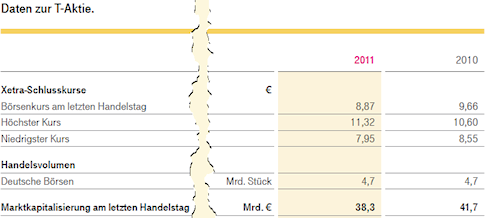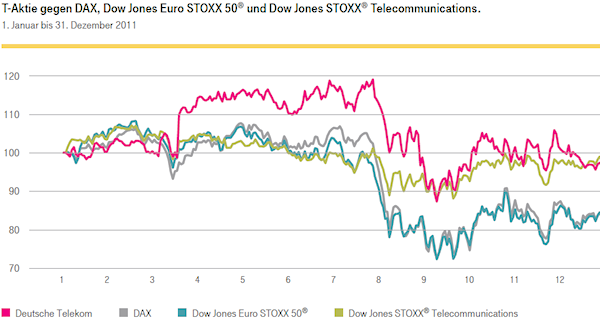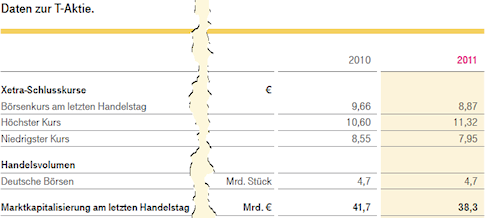Lera* says: Us Europeans write from left to right. That is also how we imagine time. Earlier is left. Later is right. Arabs write from right to left. Earlier is right. Later is left. Aborigines draw. Earlier is in the East.
Annual reports are for Euro-Arabian Aborigines. Funny. Sometimes, earlier is in the back. Sometimes, earlier is in the front. Have a look:

Source: Deutsche Telekom AG, Annual report 2011, page 46.
Some say: Important belongs in the front. Financial year is important. So, in the front. Previous year in the back. Well…

Source: also there, page U2.
Many years? You find them turned around as well. Meow.

Source: from there again, page 48.
Time series? You won’t find them turned around. You find them from left to right. From earlier to later. How it belongs. Woof.

Redesign: me.
Previous year left, financial year right. Does it work just as well? Even better. First: how it was. Then: how it is.

Redesign: me.
Previous years left, financial year right. Does it work just as well? No. A lot better. First: how it was. Then: how it is.
Who thinks like this, also sees the brackets. In the last column compared to the previous year (in German: Veränderung zum Vorjahr). Nice trick. Brackets instead of minus. Did you fall for it?
* Boroditsky, Lera: How Language Shapes Thought, Scientific American, February 2011, page 63.
